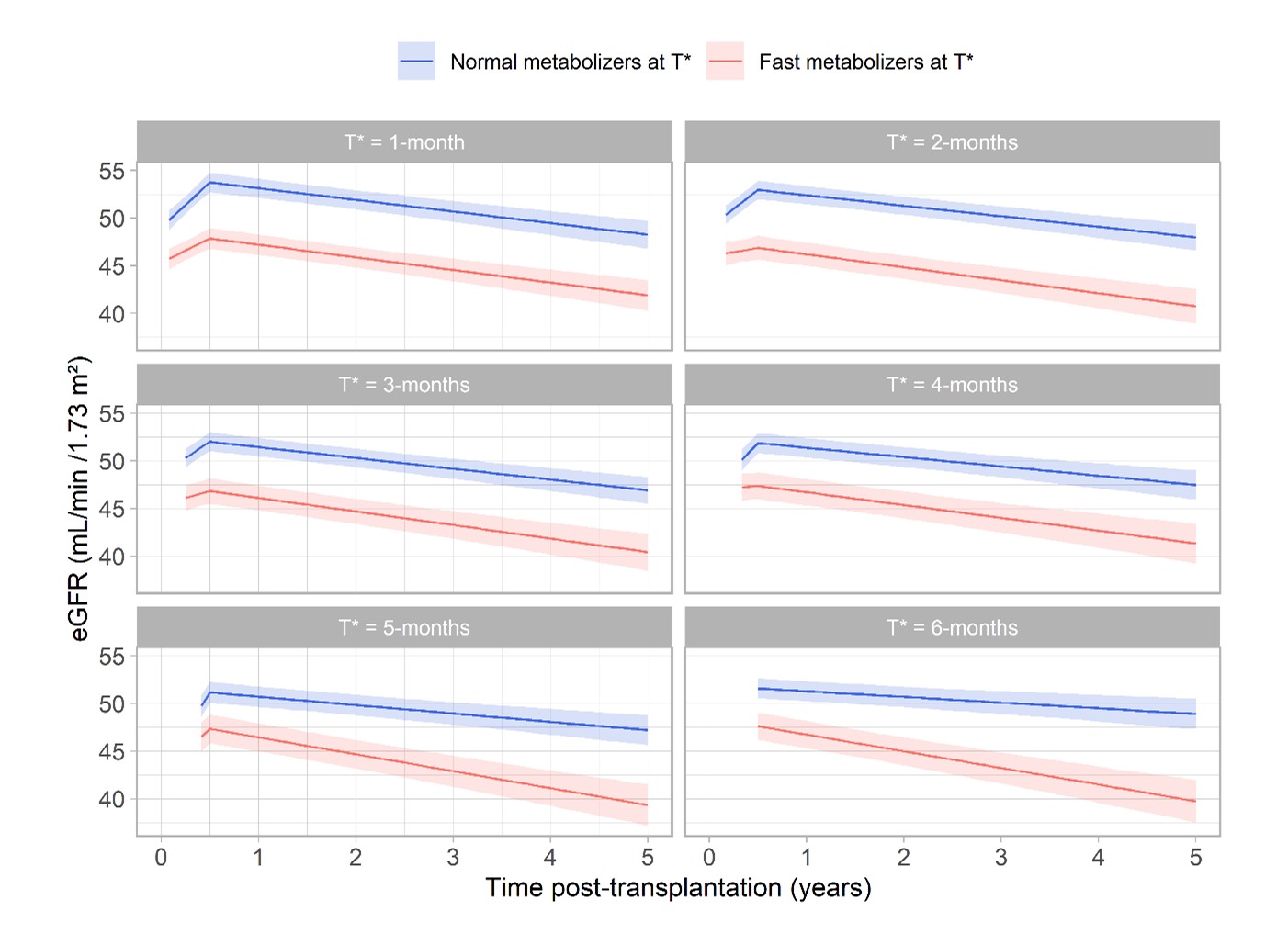
Modelling of kidney allograft function depending on fast tacrolimus metabolizer status at different times post-transplantation
Christophe Masset1,2, Florent Leborgne3, Magali Giral1,2, Claire Garandeau1, Clarisse Kerleau1, Aurélie Houzet1, Diego Cantarovich1, Gilles Blancho1,2, Jacques Dantal1,2.
1Service de Néphrologie et Immunologie Clinique, Institut de Transplantation Urologie Néphrologie , Nantes, France; 2Center for Research in Transplantation and Translational Immunology, UMR 1064, Université de Nantes, Nantes, France; 3INSERM UMR 1246 - SPHERE, Université de Nantes, Nantes, France
DIVAT Nantes Consortium.
Background: Fast Tacrolimus Metabolizers (FTM+) kidney transplant recipients (KTR) had a lower allograft function due to an important Tacrolimus toxicity. Characterization of FTM+ patients (i.e. C0 Tacrolimus/Dosage of Tacrolimus < 1.05) can be difficult to assess in real life setting due to important dosages modifications in the first months post-transplantation. We investigated the average estimated Glomerular Filtration Rate (eGFR) and its evolution depending on FTM+ status according to the time post-transplantation.
Methods: eGFR up to 5-years post transplantation was analyzed using a linear mixed effect model with random KTR-specific intercepts and slopes in all KTR with a functional allograft at 1-month post-transplantation and undergoing Tacrolimus. The main analysis was performed at T*=1-month; we also studied sub-cohorts at T*=2 to 6-months.
Results: 2025 patients were analyzed at T*=1-month, 45.6% were FTM+. The confounder-adjusted mean eGFR was lower for FTM+ (-4.06 ml/min, 95%CI from -5.57 to -2.55) and the increasing in eGFR level during the first six months was reduced for FTM+; meaning that being FTM+ at T*=1-month lead to a 45% reduction of allograft function improvement between one- and 6-months post-transplantation added to the baseline difference. Using later definition of the FTM+ status (T*>1-month) resulted in comparable results except that the long-term decrease of eGFR was significatively affected when defined from the fifth month post-transplantation.
Conclusion: FTM+ status’ deleterious effect on eGFR occurs since the first month with an eGFR impairment increasing in time. Physicians may consider an immunosuppression adaptation in the very early post-transplantation period to improve allograft function of FTM+ patients.


right-click to download
